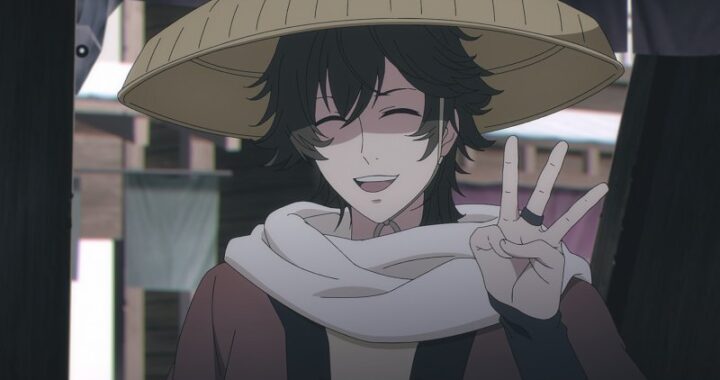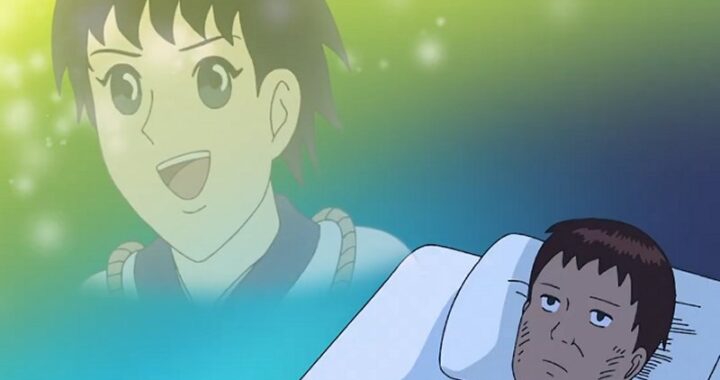BT: Well, and here’s an interesting question—for Jimmie, perhaps. Which is considered older: Ah My Goddess or You’re Under Arrest? Does one property having more recent anime (or more in general) being made for it make a difference?

JM: Both are pretty close-if I recall correctly, the original AMG! OVA series was released before the YUA series but only by about a year or so (1993 and 1994 respectively). There is actually more TV episodes for YUA with about 100 over 3 seasons but the second season of AMG! is more recent and probably a bit more fresh in peoples’ minds. For a fan just coming into anime in 2010 AMG! would probably seem to be the newer of the two since the YUA manga ended nearly two decades before and the AMG! manga was still going strong at that time. AMG! has also seen new OVA & OAD episodes produced as bonuses for at least a couple of the more recent manga volumes sold in Japan so yeah, I think that more recent anime does make a difference.
There is another good example of this that I can think of as well–Tenchi Muyo!, which has seen several OVAs, TV series and movies released over the years since the original back in the early 1990s with the most recent being War on Geminar.
BT: Tenchi is one of those eternal properties, for some reason. (The Gundam of romcoms?) I have the impression that Tenchi fans from its heydey (late 90s, turn of the millennium) would consider it more recent, as they continue to follow it. But it probably has a similar staying power to something like Ranma, sure, for some fans coming in after that.

GBS: Tenchi is an interesting example. Could the reason for its “evergreen” status be derived from its continually being renewed in the form of remakes, spinoffs, and sequels?
BT: That could be it.
DA: Yes, there’s always a new Tenchi for a new generation. And a Tenchi for every genre, from science fiction to magical girl to straight-up porn.
GBS: The franchise that is everything to everyone. In contrast, AMG! likely has a slightly different source for its long life in fan consciousness: the continuing popularity of the original manga.
BT: Depends, too, on what kind of “remake” or spin-off we’re talking about. If it’s a new telling, a newer fan may look at the entire property in a new light, as still relevant for their time. But a straight sequel may put them off.
GBS: That does seem to be the way that anime producers prefer to operate. I cannot think of too many examples of straight sequels coming years later. InuYasha: The Final Act is really the only one that immediately comes to mind, whereas there are plenty of examples of the same production (writing, design, directing) teams coming along and years later doing a new show that may be a new retelling or a “spiritual successor” to the earlier property. Similar themes are explored and the old work is retold in a completely new way.
BT: The remake—or the “reinterpretation”, of either the earlier version, or source material—seems to do two things at once: to claim that nothing is ever old enough to not still be relevant (in either art or commerce), and to also say that whatever it is being reversioned is certainly old enough, if its rights holders feel it needs to be re-introduced.
GBS: As the old saying goes, everything old is new again…

BT: Some properties may not feel as old for this reason: like the “remastered” release, Ghost in the Shell 2.0, little different from the updated version of the original Star Wars trilogy, dressed up for a newer generation. Or, of course, the Evangelion movies, for a more radical, grounds-up, reversioning. The flurry of attention over them almost makes one forget the original TV series first aired nineteen years ago.
DA: If there’s anything that makes a title timeless, I would say taking away any individual element that would date it to a certain time: fantasy settings do a good job of that. Maybe it’s just in my head, but Record of Lodoss War is a title that doesn’t seem any older to me today than when I first watched it sixteen years ago. Haibane Renmei, which I mentioned previously, also has that sort of timeless quality. Weirdly, however, it seems like science fiction, another genre outside of common cultural reference points, does sometimes date quite badly.
GBS: Lodoss is an interesting case, in that it’s perhaps only the animation (and the music) that dates it. Content-wise, I think you’re right that fantasy works have a certain timelessness that helps them stay “fresher.” If the animation and music of Lodoss were updated, you could otherwise present the same exact story, heck just reanimate it to the original vocal performances and it would not stick out as being “old” in terms of story.
Sometimes producers take their time before going to the same well again. It’s not gone unnoticed that this season’s Coffin Princess Chaika, which is directed by Soichi Masui, has music by Seikou Nagaoka and is based upon a story originally by Ichiro Sakaki, features an unwanted princess who is on the run from “the authorities” and is protected by a brother-sister team who form a two-person army. Oh…and they’re accompanied by a “dragoon.” Sound familiar? Look up one particular previous work by these three.
BT: Shows might, but some story ideas never get old.
GBS: Though sometimes it can be hard to tell when an old idea is being used with deliberate reference to a past show and when it’s just being brought in because the writer today couldn’t work out a new way to do it. That is, the difference between deliberate invocation and cynical or lazily opportunistic redeployment of an old concept.
BT: Especially, perhaps, because of the current age and maturity of the industry and medium. There’s a lot to draw from. But, as well, there are ideas and concepts and even designs that are so good at defining something, like their genre, or their era. They may not have been intended to be when they were introduced but they are at some point considered innovative or defining.
JM: Like “Action Girls,” perhaps?
GBS: But…who is the first Action Girl? It’s a very common character type or story element today, but how far back does it go?
JM: The earliest that I can think of are Go Nagai’s Cutey Honey and Lady Oscar of Rose of Versailles. Both date from the 1970s at a time when women like them were the exception in anime and not the norm. Oh, there’s one other–Fujiko Mine from Lupin the Third who was never above gunning someone down if that person was in the way of her getting what she and the Lupin gang were after.
G.B. Smith
Greg Smith has been writing anime reviews and a review column on anime dubbed into English for several years, first at AnimeOnDVD and now for The Fandom Post. His occasional column on English anime dubs, Press Audio, appears whenever he comes across a dub worthy of a closer look. He is also the deputy editor for our seasonal and year end retrospectives.




